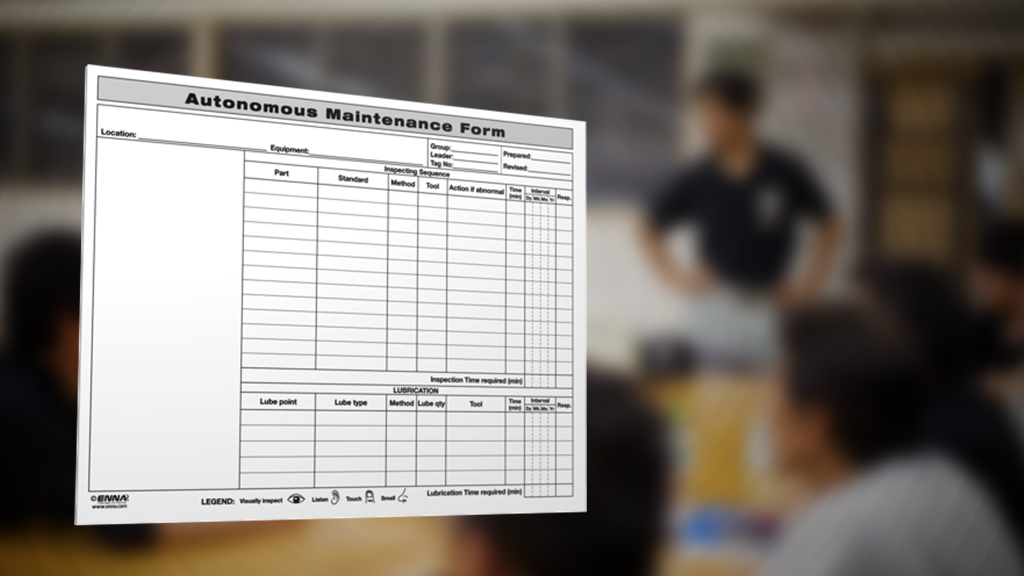Using The Autonomous Maintenance Form
Autonomous Maintenance Form

Topic
Total Productive Maintenance (TPM)
Summary
Provides the information necessary to systemize the maintenance requirements of a machine or part of a machine so that the operators can autonomously maintain specific elements of a maintenance without needing other department support.
Objective
The objective of this use of our Autonomous Maintenance form is to provide you with a sample of all the elements working together to help show you the power of this form towards a more productive work area.
Summary of Steps
- Fill in essential fields at the top
- Location
- Equipment
- Group
- Leader
- Tag No
- If not relating to a TPM Tag or suggestion, leave blank, otherwise use related Tag Number.
- Date prepared
- Date revised
- For supervisor use only – and only with the help of the preventative maintenance team
- Left area
- Draw schematic with indicators that relate what will be written on the form itself
- Label and highlight specific areas of the machine that require attention
- Example: IMAGE
- Inspecting sequence
- Parts to check
- Relate back to your schematic drawing for locations
- Standard to check against (normal condition)
- Method to perform check (reference the Legend at the bottom of the form)
- Tooling to use (if needed)
- Action to take if abnormality is detected
- How long the action should take
- Interval of checks (How many times per day/week/month/year)
- Responsibility
- Total inspection time required (added at bottom of table)
- Parts to check
- Lubrication
- Lube point
- Lube type – be specific
- Greases, Engine oils, Hydraulic oils, Gear oils, etc.
- Method to perform check (reference the legend at the bottom of the form)
- Lube quantity or amount
- Tooling to use (if needed)
- Time it takes to apply lubricant
- Interval of lubrication (How many times per day/week/month/year)
- Responsibility
- Total lubrication time required (added at bottom of table)
- Legend (use these in the “method” category in both tables)
- Visually inspect (eyeball)
- Listen (ear)
- Touch (finger)
- Smell (nose)
Included in:
TPM Training Package
Additional Resources
Lean Dictionary



